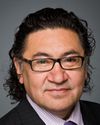With respect to the Canadian Forces (CF): (a) what is the total number of men and women who served in the CF from 2001 to 2011 inclusively; (b) what is the breakdown of CF members who served in the Navy, Airforce, and Land force sections respectively from 2001 to 2011 inclusively; (c) how many members of the CF have been medically released from 2001 to 2011 inclusively; (d) what is the breakdown of CF members who have been medically released within the Navy, Airforce, and Land force sections from 2001 to 2011 inclusively; (e) what are the details on how many members are medically released in the factors comprising the following medical categories (i) visual, (ii) colour, (iii) hearing, (iv) geographical factor, (v) occupational factor, (vi) air factor; (f) how many currently serving CF members are in receipt of a disability pension from Veterans Affairs Canada (VAC) from 2001 to 2011 inclusively; (g) how many currently serving personnel are in receipt of the Service Income Security Insurance Plan (SISIP) Long Term Disability (LTD) insurance from 2001 to 2011 inclusively; (h) how many medically released CF personnel are in receipt of the SISIP from 2001 to 2011 inclusively; (i) how many medically released CF personnel are in receipt of a disability pension from VAC from 2001 to 2011 inclusively; (j) what is the total number of ex-CF personnel receiving a disability pension from VAC from 2001 to 2011 inclusively; (k) how many members of the CF have been assigned on a temporary basis Medical Employment Limitations from 2001 to 2011 inclusively; and (l) how many members of the CF have been assigned on a permanent basis Medical Employment Limitations from 2001 to 2011 inclusively?
House of Commons Hansard #69 of the 41st Parliament, 1st Session. (The original version is on Parliament's site.) The word of the day was plan.











